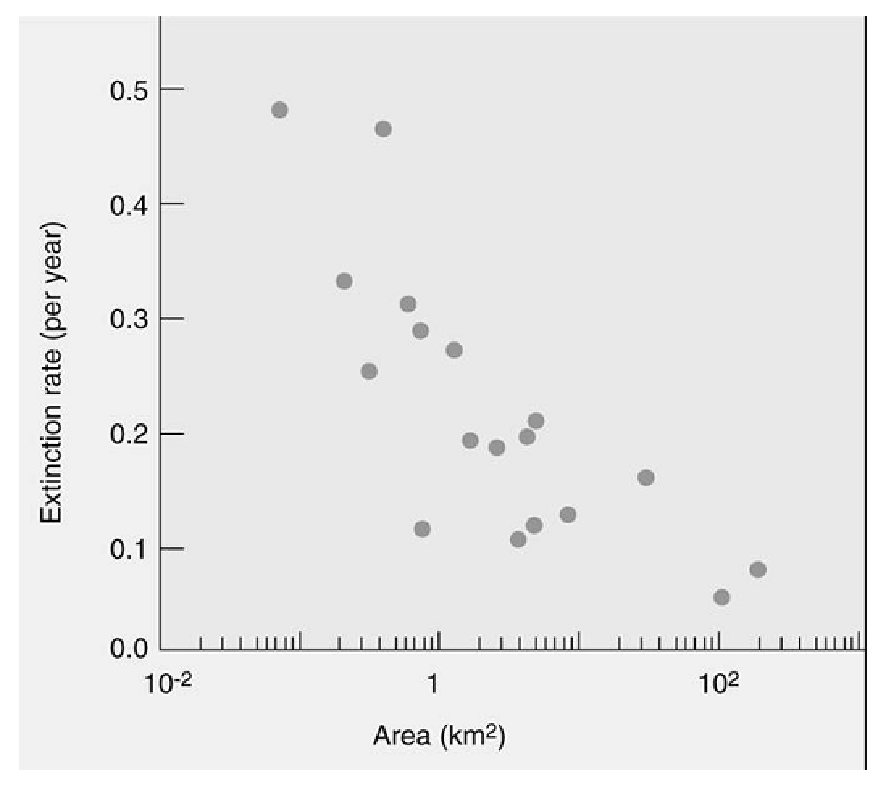Which of the following is the simplest form of a carbohydrate?
a. Disaccharide
b. Polysaccharide
c. Monosaccharide
d. Tetrasaccharide
e. Oligosaccharide
c
You might also like to view...
The following graph shows the relationship between extinction and habitat area. Which statements help explain the trend shown on the graph? Check all that apply.

_____ Larger patches are more likely to be encountered by new immigrants.
_____ Larger patches are likely to have a more uniform habitat.
_____ Larger patch size reduces genetic drift.
_____ Larger patches are more geographically isolated than smaller patches.
_____ Species richness is higher on larger patches.
Additional:
Clarify Question
· What is the key concept addressed by the question?
Gather Content
· What do you already know about habitat area and extinction?
Choose Answer
· Given what you now know, what information and/or problem solving approach is most likely to produce the correct answer?
Reflect on Process
· Did your problem-solving process lead you to the correct answer? If not, where did the process break down or lead you astray? How can you revise your approach to produce a more desirable result?
You have entered a 5K race. As you finish the last 500 yards, your body has converted _________________ energy to _________________ energy with the loss of _________________
A. chemical potential; kinetic; heat B. heat; chemical potential; kinetic energy C. heat; kinetic; chemical potential energy D. kinetic; chemical potential; heat E. chemical potential; heat; kinetic energy
A researcher has developed two stains for use with seed plants. One stains sporophyte tissue blue; the other stains gametophyte tissue red
If the researcher exposes pollen grains to both stains, and then rinses away the excess stain, what should occur? A) The pollen grains will be pure red. B) The pollen grains will be pure blue. C) The pollen grains will have red interiors and blue exteriors. D) The pollen grains will have blue interiors and red exteriors.
The different types of nucleic acids found in viruses include all of the following except
A. double-stranded DNA. B. single-stranded DNA. C. single-stranded RNA. D. double-stranded RNA. E. There are no exceptions here. Each of these types may be found in viruses.